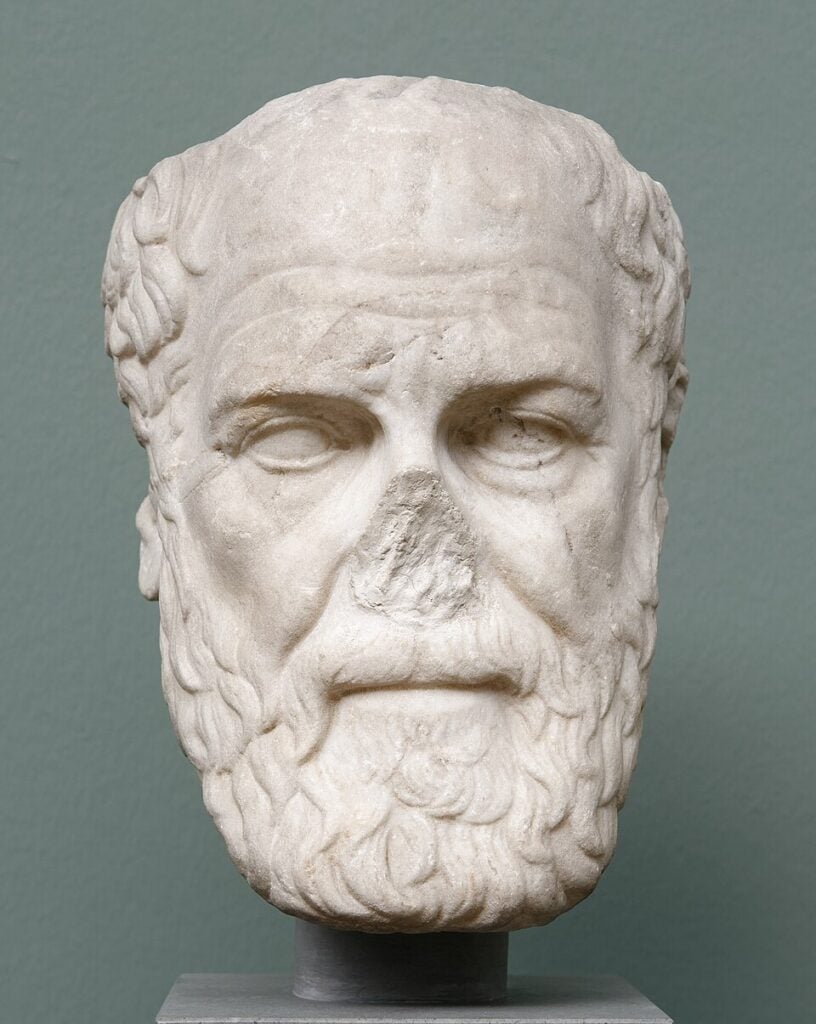
A Greek woman named Phryne became an iconic figure in ancient Athens, remembered for the extraordinary moment when her beauty purportedly saved her life. Not many people in history can claim that they were so close to being imprisoned, or worse, executed for something they had committed, but whose beauty saved their lives, but this was the case for the ancient Greek woman.
Phryne’s life in the shadow of impiety in ancient Athens
Phryne lived in Athens during the fourth century BC. She was born in Thespiae in Boeotia around 371 BC before moving to Athens, ancient Greece’s epicenter. The Athenians were a society that admired beauty. However, people often distrusted women who lived outside the roles patriarchal society had assigned them, and she was one such individual.
As a hetaira, or courtesan, she was, nevertheless, unlike ordinary prostitutes. Phryne frequented the circles of philosophers, generals, and politicians. That alone set her apart and made her part of the Athenian elite. She became a sort of celebrity by ancient Greek standards, and her fame was only matched by her independence and fortune.
At some point, she was accused of “asebeia,” Greek for impiety. Some later writers specify the charge as profaning the Eleusinian Mysteries, though there is no clear evidence for the exact charge she faced. During these times, “asebeia” meant impiety had been committed against the gods. The Athenians did not treat such charges lightly. Socrates himself had been condemned under the same law only a few decades earlier. The exact details of Phryne’s offense have, nonetheless, been lost to time.
Perhaps it was her participation in religious festivals or simply her audacity in being so visible and famous—something scandalous for a woman, after all, that led to her being condemned. In a city where piety and civic duty were tightly bound together, either could be enough to draw suspicion, and all it took was someone willing to go the extra mile and take one to court for this.
Hypereides and Phryne’s path to legendary acclaim

Phryne’s defense during the trial for impiety was taken up by Hypereides, one of the most accomplished orators of his time. Renowned for his ability to sway juries, even he reportedly found it difficult to secure her acquittal through words alone—at least according to later accounts of the trial.
Writers such as Athenaeus and Quintilian recount a desperate moment when Hypereides, noticing the jurors turning against his client, stripped Phryne before them. Exposed in the courtroom, she was no longer merely a woman on trial. To those present, she became a living image of Aphrodite herself. The story goes that to condemn such beauty would be to risk angering the goddess of love and beauty. In the wake of this extraordinary act, the jurors acquitted her, swayed not by argument but by the sheer resemblance of her beauty to that of Aphrodite, the Greek goddess of beauty and love.
Whether this incident is based on an actual event is debatable, however, and most historians are doubtful. The actual speech Hypereides delivered has been lost, and the dramatic story of Phryne’s undressing appears only in later sources such as Athenaeus and Pausanias, rather than in contemporary accounts.
It is therefore safer to treat the tale as legend rather than fact. Yet the myth endured precisely because it resonated with Greek ideals about beauty, the power of the divine, and the allure of spectacle. In that sense, whether it happened literally mattered little—its impact proved lasting, enduring for millennia.
Centuries later, the story continued to inspire, and 19th-century European artists depicted the scene with the theatrical flourish of Romanticism, while writers retold it as a striking example of the power of beauty. Over time, Phryne became a symbol of how appearances can overwhelm not just individuals but even the law itself.

